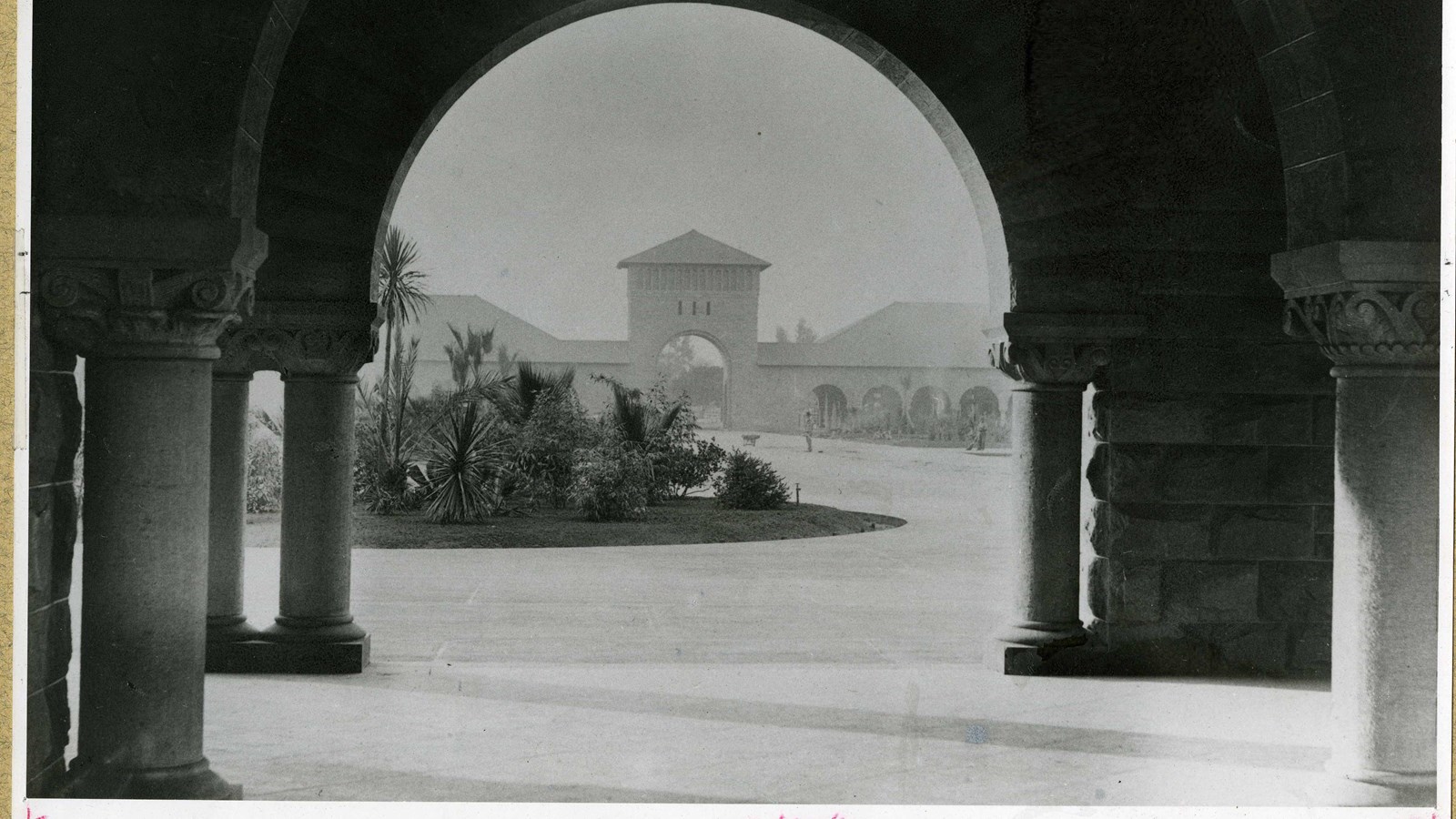Last updated: June 11, 2024
Place
Stanford University

Olmsted Archives
Quick Facts
When Leland Stanford Sr.’s son died of typhoid fever at the age of 15, the railroad tycoon felt the best way to honor his son would be to dedicate a new college in his honor. Stanford wanted the best, so for the grounds of his campus, he hired Frederick Law Olmsted.
From his arrival in the Fall of 1886, Olmsted’s relationship with Stanford would be a tumultuous one. From the selection of the site to determining the orientation of the main quadrangle, Stanford was involved in every major decision on the campus.
Stanford wanted his school to rival those of New England’s Ivy League campuses, however Olmsted proposed a campus uniquely suited to California’s climate. Stanford dictated much of Olmsted’s design work on the project, envisioning a campus monumental in scale and formal in design, while Olmsted proposed a campus nestled into the hills around the property. However, Stanford insisted the campus be built on flat land, with a grand axial approach in the center of campus.
As a strong-willed client, and putting in $30 million to the design, many of Stanford’s ideas were largely implemented. Nevertheless, Olmsted won a key disagreement when he proposed the main campus quadrangle be paved and contain plantings of native trees and shrubs.
While Olmsted’s vision of open, interlocking quadrangles was gradually lost due to campus development, the quad design illustrates a key Olmsted principle-sustainability. Olmsted's recommendation of paved space and native plants over lawns showed an understanding of the resources needed to maintain a landscape.
Source: "Stanford University," The Cultural Landscape Foundation
For more information and primary resources, please visit:
Olmsted Research Guide Online
Olmsted Archives on Flickr
Olmsted Online
From his arrival in the Fall of 1886, Olmsted’s relationship with Stanford would be a tumultuous one. From the selection of the site to determining the orientation of the main quadrangle, Stanford was involved in every major decision on the campus.
Stanford wanted his school to rival those of New England’s Ivy League campuses, however Olmsted proposed a campus uniquely suited to California’s climate. Stanford dictated much of Olmsted’s design work on the project, envisioning a campus monumental in scale and formal in design, while Olmsted proposed a campus nestled into the hills around the property. However, Stanford insisted the campus be built on flat land, with a grand axial approach in the center of campus.
As a strong-willed client, and putting in $30 million to the design, many of Stanford’s ideas were largely implemented. Nevertheless, Olmsted won a key disagreement when he proposed the main campus quadrangle be paved and contain plantings of native trees and shrubs.
While Olmsted’s vision of open, interlocking quadrangles was gradually lost due to campus development, the quad design illustrates a key Olmsted principle-sustainability. Olmsted's recommendation of paved space and native plants over lawns showed an understanding of the resources needed to maintain a landscape.
Source: "Stanford University," The Cultural Landscape Foundation
For more information and primary resources, please visit:
Olmsted Research Guide Online
Olmsted Archives on Flickr
Olmsted Online
